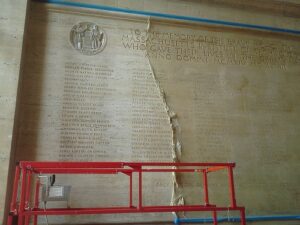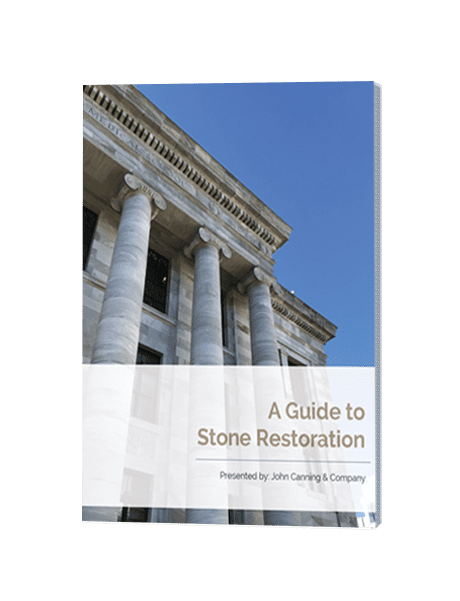The astounding nature of stonework in the architectural world cannot be emphasized enough as we stand in awe and wonder at the incredible structures that surround our daily lives. People travel the world to behold for themselves the tremendous glory of the Taj Mahal, the Leaning Tower of Pisa, and the ancient ruins of the Colosseum. What do these historic buildings have in common? Each of these and a tremendous number of other old and new architectural wonders have stone as their foundational material.
The Wondrous Nature of Stone
Stone is the most fundamental material used in the architectural world. The Stonehenge and the Great Pyramids of Giza, some of the oldest buildings in the world, were made from marble and sandstone, two of the most common types of architectural stone still used in construction today. This is a testament to its extreme durability, beautiful appearance, and generally useful nature. Despite the vast technological advances of modern times, stonework is consistently used throughout all styles of buildings. Even skyscrapers are made primarily of concrete and other stone forms. The famous Empire State Building is largely made of limestone and granite which are two of the most widely and consistently used stone types, transcending every architectural era.

Empire State Building
Common Types of Architectural Stone
Types of architectural stones are many in number, from the most common types to those which are rare and unusual. Common types, which make up the largest percentage of structures both ancient and modern, are limestone, sandstone, granite, and marble. Historic stone can often be identified through the recognition of these common types as well as understanding the common characteristics of historic stone. These characteristics include beauty, durability, strength, porosity, and other traits which add value and desirability to the stone. These types are sourced all throughout the earth’s crust which makes them easily accessible.
Unusual Types of Architectural Stone
Although the four aforementioned types are the most commonly used in architecture and construction, other stone types come into play as well which are often used to fit a specific purpose or to fill a particular need. These rarer types can be natural or man-made.
Natural Stone
Many of the less commonly used stones resemble one of the common types while adding some new desirable feature or quality. Often, they are unusual due to the unusual location in which they are sourced. For example, igneous rocks like basalt and andesite are often used in structures near volcanic activity. They are extremely durable and resistant to corrosion, making them perfect candidates for pavement and exteriors in harsh weathered regions. The Hulihee Palace in Hawaii was built in 1838 by from lava rock, which is dark in appearance, but very porous as it cools, perfect for binding to mortar. After the palace was built, it was clad in lime plaster and finished with scribed “mortar joints” to exude an Ashlar block appearance.
Travertine is a stone sourced in Turkey and used for its softness and its resemblance to marble in appearance while remaining a lot less expensive. The company performed an extensive cleaning process on this stone type at MIT.
The floor of the Sterling Memorial Library at Yale University is made from Mankato stone, a type of limestone rich in dolomite and magnesium, making it highly resistant to weathering. It is quarried near the Minnesota River, a location which makes replication difficult when a replacement is needed in distant places such as New Haven, CT. Consequently, John Canning & Co. worked on toning the replacement slaps to match the existing stone during the floor’s restoration process.
Travertine Stone Cleaning at MIT
Stone cleaning tests (Left); Stone cleaning in progress (Center); Stone cleaning complete (Right).
Man-Made Stone
Stone is created rather than sourced for a number of different reasons. Due to its heaviness, stone is not easily transported and therefore must be locally sourced. Consequently, if natural stone is scarce in the desired location, it can be made.
Stone is also made to fit a specific purpose. John Canning & Co. is currently restoring the stonework in the grand room of Mellon Auditorium in Washington D.C. The stone is called Sphinxstone, made to resemble limestone in appearance. Although there exists much mystery surrounding the elements and manufacturing procedures of this one-of-a-kind stone, it is believed to be made of crushed oyster shell and was clearly made for acoustical reasons. The Sphinxstone is very porous and sound absorbent, making it a perfect candidate for a grand auditorium. If a natural stone was used in its place, such as marble or limestone, it would ruin the acoustics of the room, making it extremely resonant and prone to an excess of echo. The lobby right outside the auditorium, although a quarter of its size, is extremely echoey which is not a surprise since it is not made from the same Sphinxstone.
Sphinxstone at the Mellon Auditorium
Whether common, unique, natural, or man-made, stone is a wondrous material indeed and its strength, beauty, and useful nature will continue to aid humanity until the end of time. For this reason, stonework must be preserved and restored wherever needed. John Canning & Co. is proud to be highly experienced in this area and is more than happy to offer assistance. If you have a project you would like to discuss or have any questions at all, contact us.

















